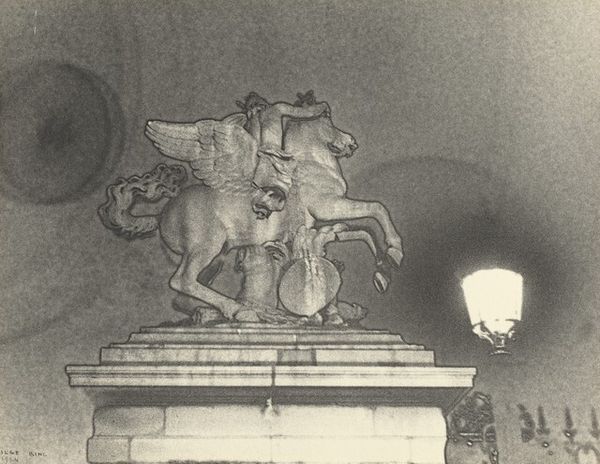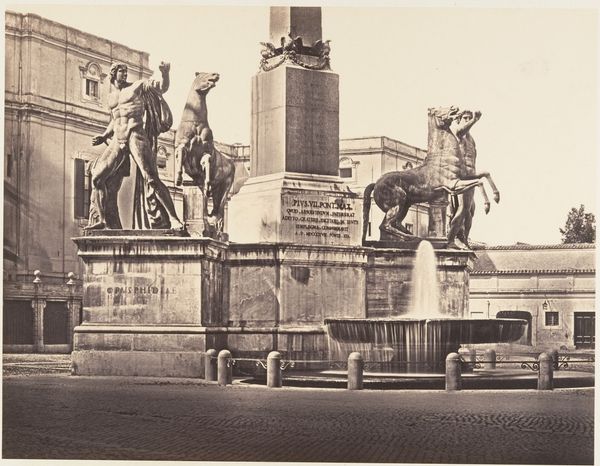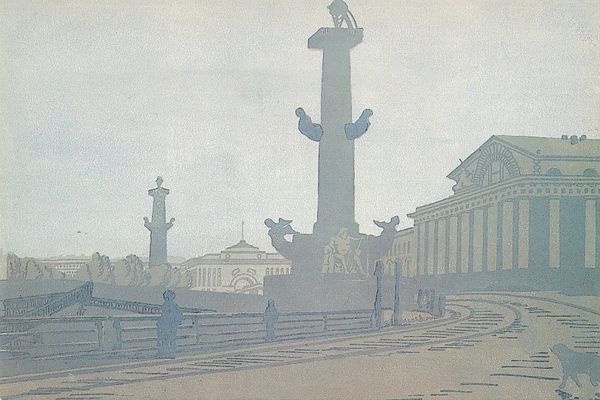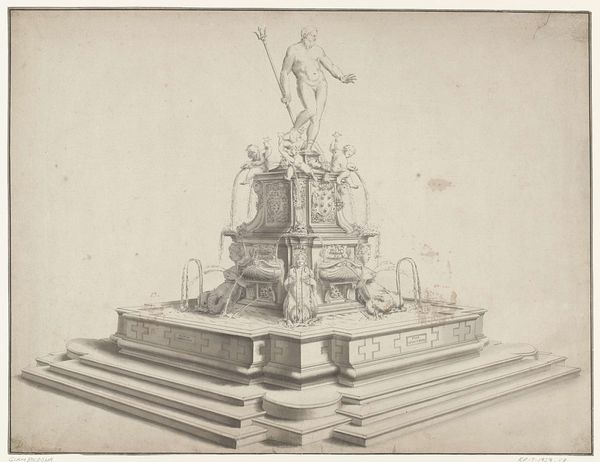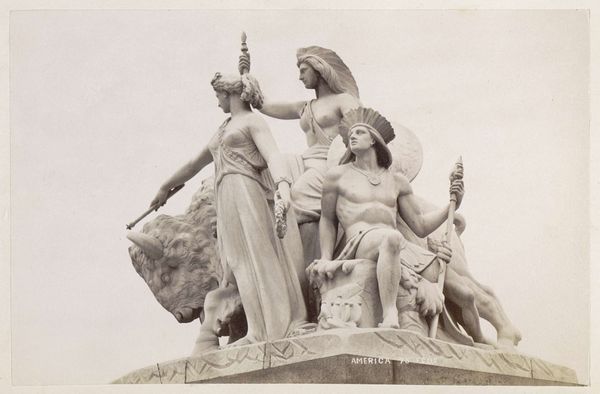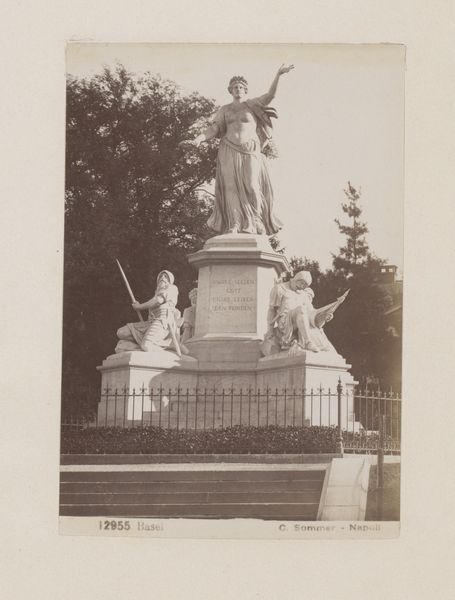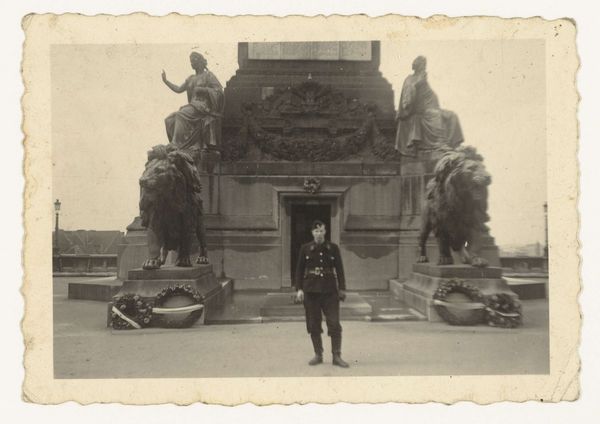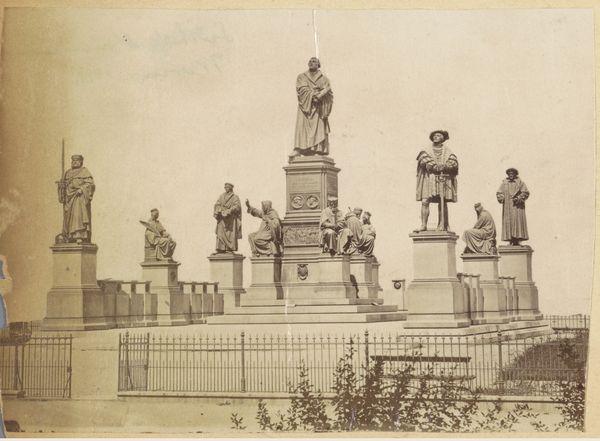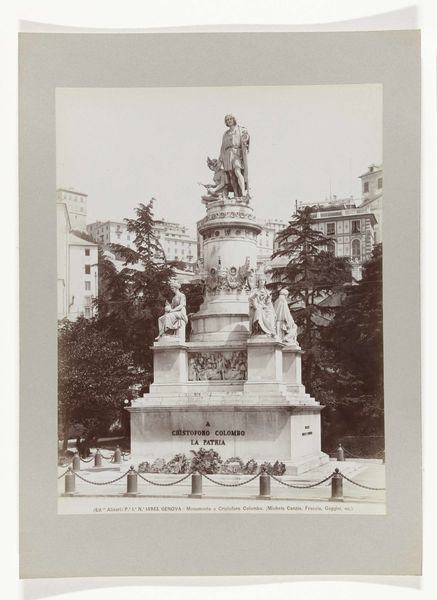
Dimensions: overall: 20.8 x 28.1 cm (8 3/16 x 11 1/16 in.)
Copyright: National Gallery of Art: CC0 1.0
Curator: This is Ilse Bing's "Streetlamp on the Pont Alexandre III, Paris," a gelatin silver print taken in 1934. The composition frames the ornamental sculptures atop the bridge against a stark, almost bleached-out sky. Editor: Immediately, there’s something unsettling about this photograph. It’s undeniably beautiful, but those bronzes frozen mid-action, coupled with that sky, evoke a sense of foreboding, of impending... something. Curator: Bing was deeply engaged with the avant-garde movements of her time, particularly the New Objectivity. She utilized sharp focus and strong contrasts to capture the modern world around her, with particular interest in the architecture and streetscapes of Paris. These details underscore a tension between tradition and modernity, which was very palpable in the interwar years. Editor: Precisely. And this tension translates beautifully into the frame. The photograph aestheticizes the traditional elements—the cherubic figures, the ornate lamp—but the looming presence, the sheer scale against the void of sky, gives it a weight, a critique, that's undeniably modern. The child soldier pointing his rifle towards empty space feels like an omen. Curator: The Pont Alexandre III itself was constructed to solidify Franco-Russian relations at the end of the 19th century. Bing, though German, found herself drawn to the Parisian cityscape. And within that, there’s a dialogue between what Paris represented—a center of art, culture, and diplomacy—and what it was becoming on the eve of another world war. Editor: It’s impossible to separate this image from the context of its time. Bing, as a Jewish woman photographing Europe in the 1930s, adds layers of complexity. Those bronze figures, symbols of power and authority, become stand-ins for a decaying, fragile establishment. This image isn't just documenting a bridge; it’s documenting a feeling, a societal unease. The sharp angles and high contrast serve to highlight the increasing social precarity she no doubt felt as an outsider. Curator: Indeed. By focusing on such quotidian, yet iconic, structures, Bing indirectly provides a record of the socio-political atmosphere of the time. A quiet visual document of Europe’s slide towards darkness. Editor: Looking at it, one is left to consider not just the beauty of the past, but how such beauty can mask underlying anxiety and, in some ways, even foreshadow catastrophic events. The artistic power here resides in allowing us to confront those uncomfortable truths.
Comments
No comments
Be the first to comment and join the conversation on the ultimate creative platform.

